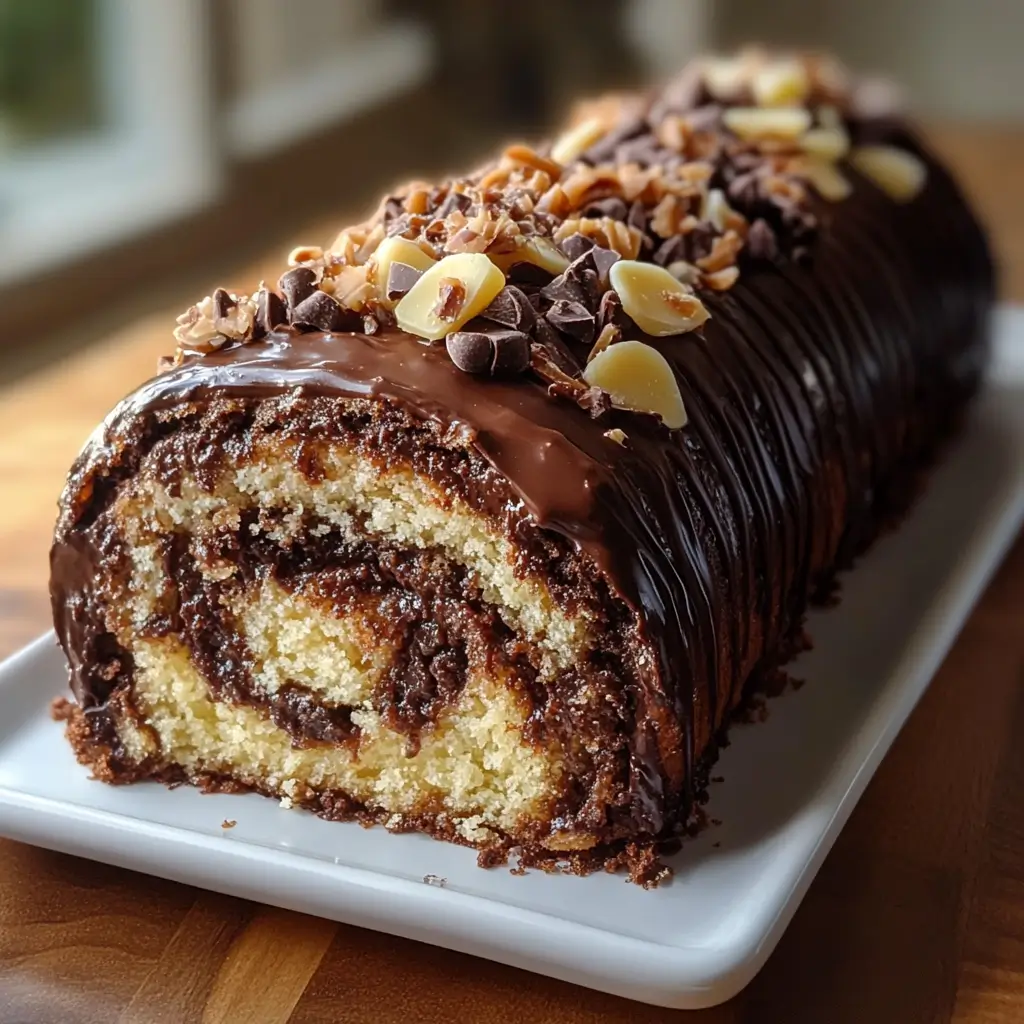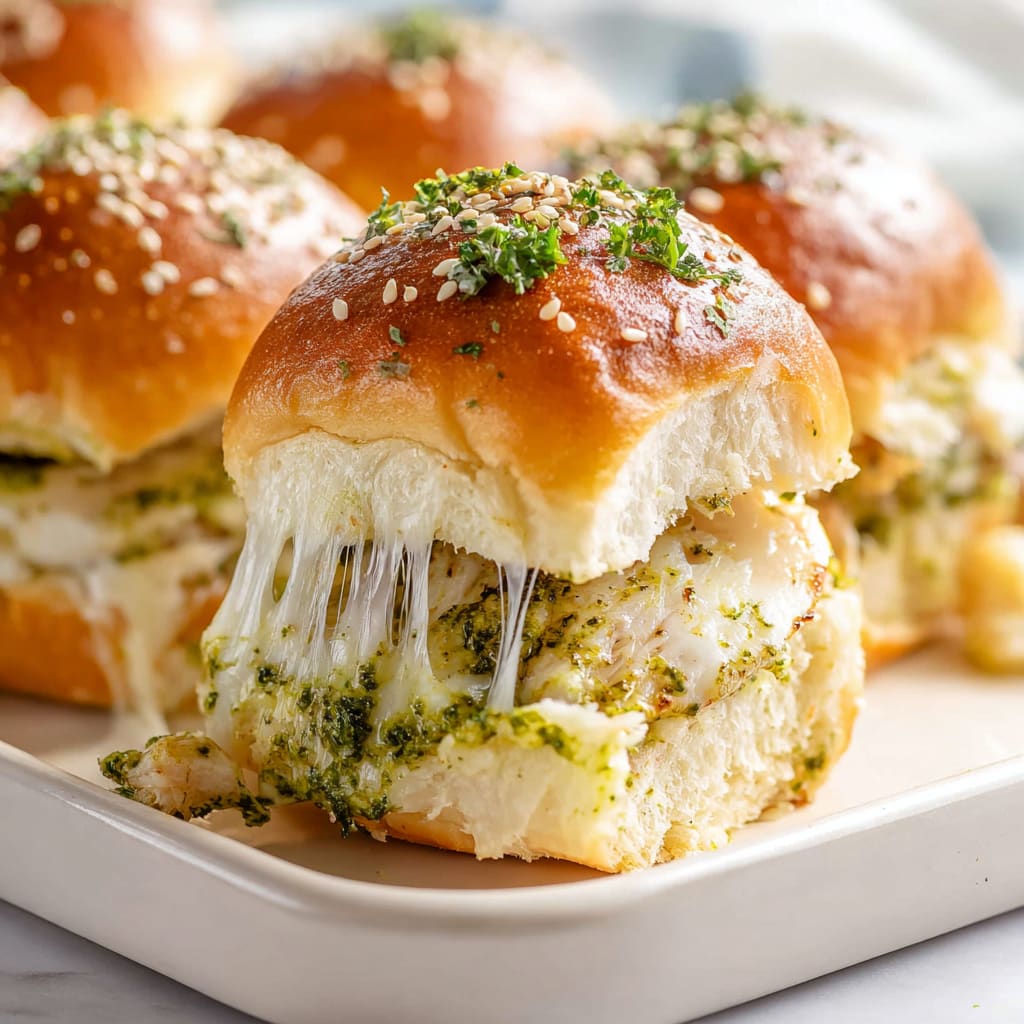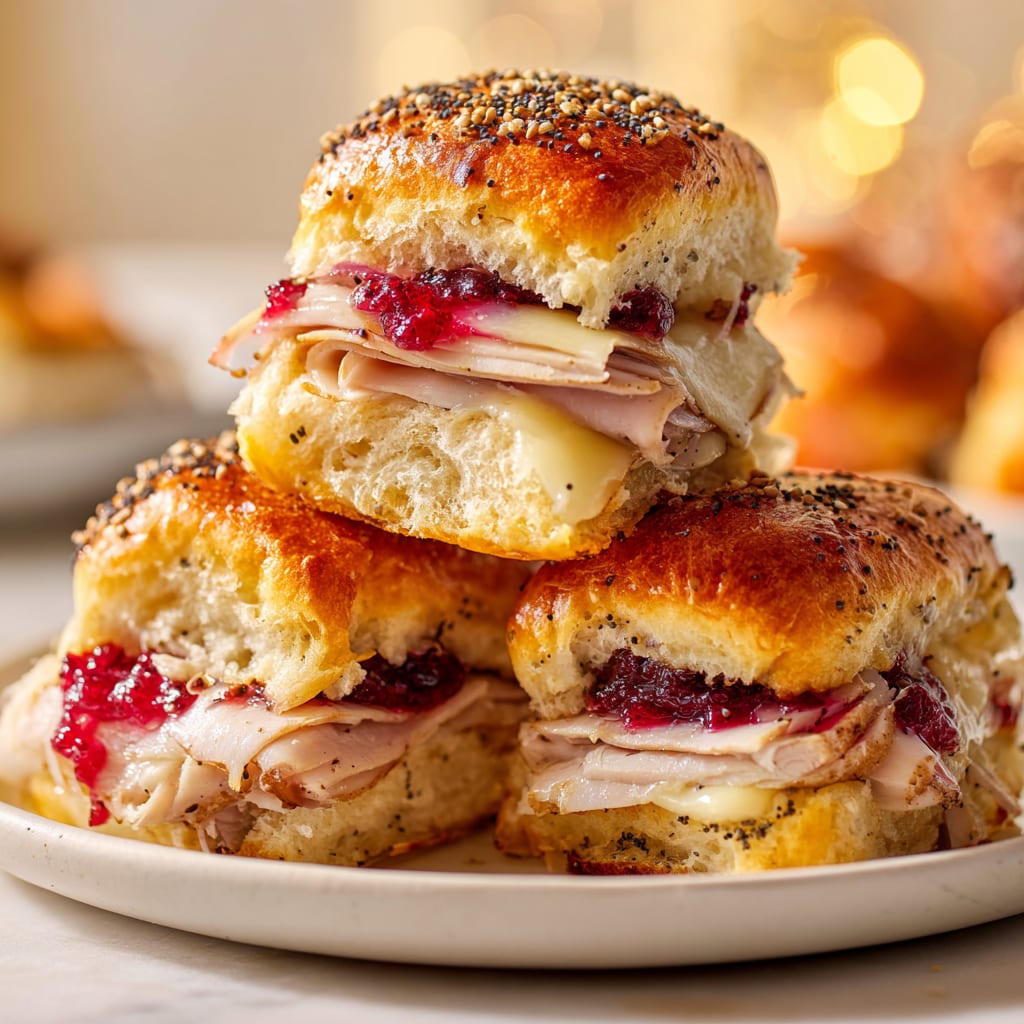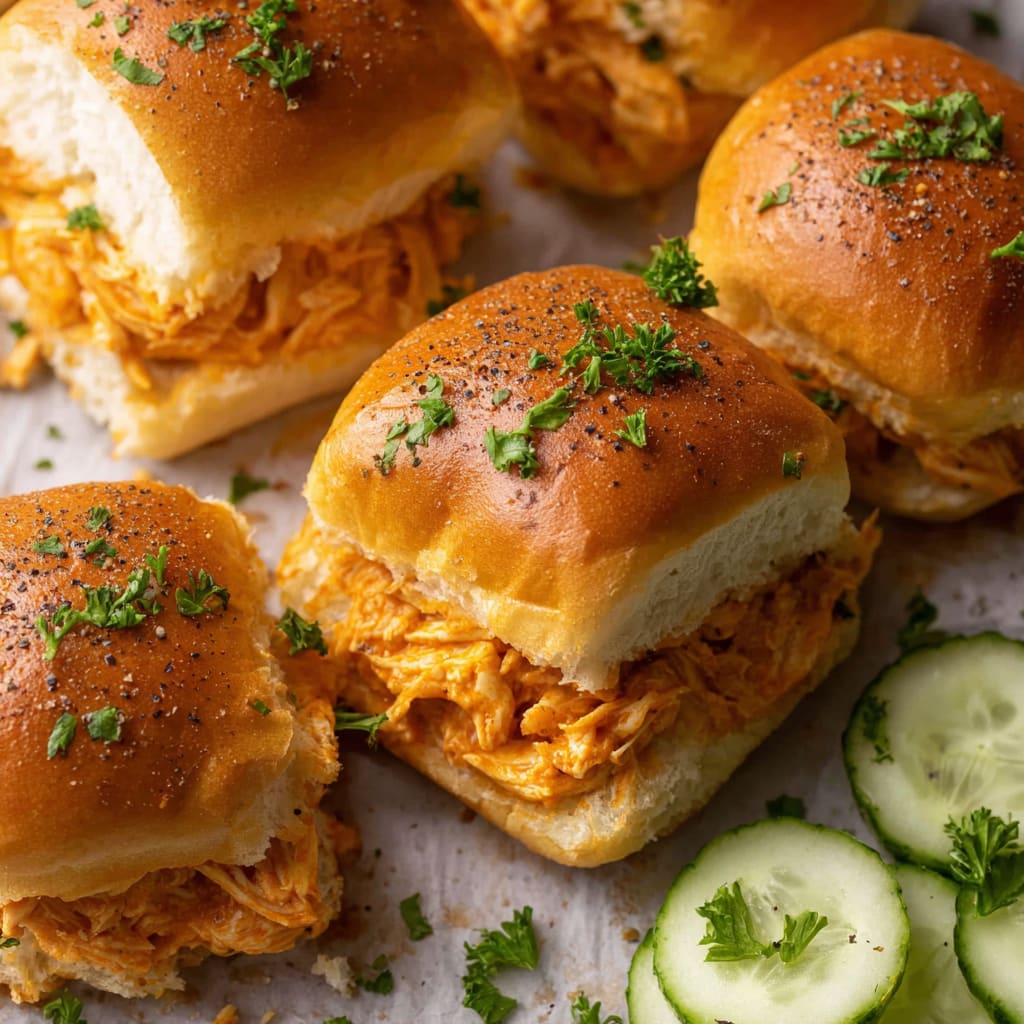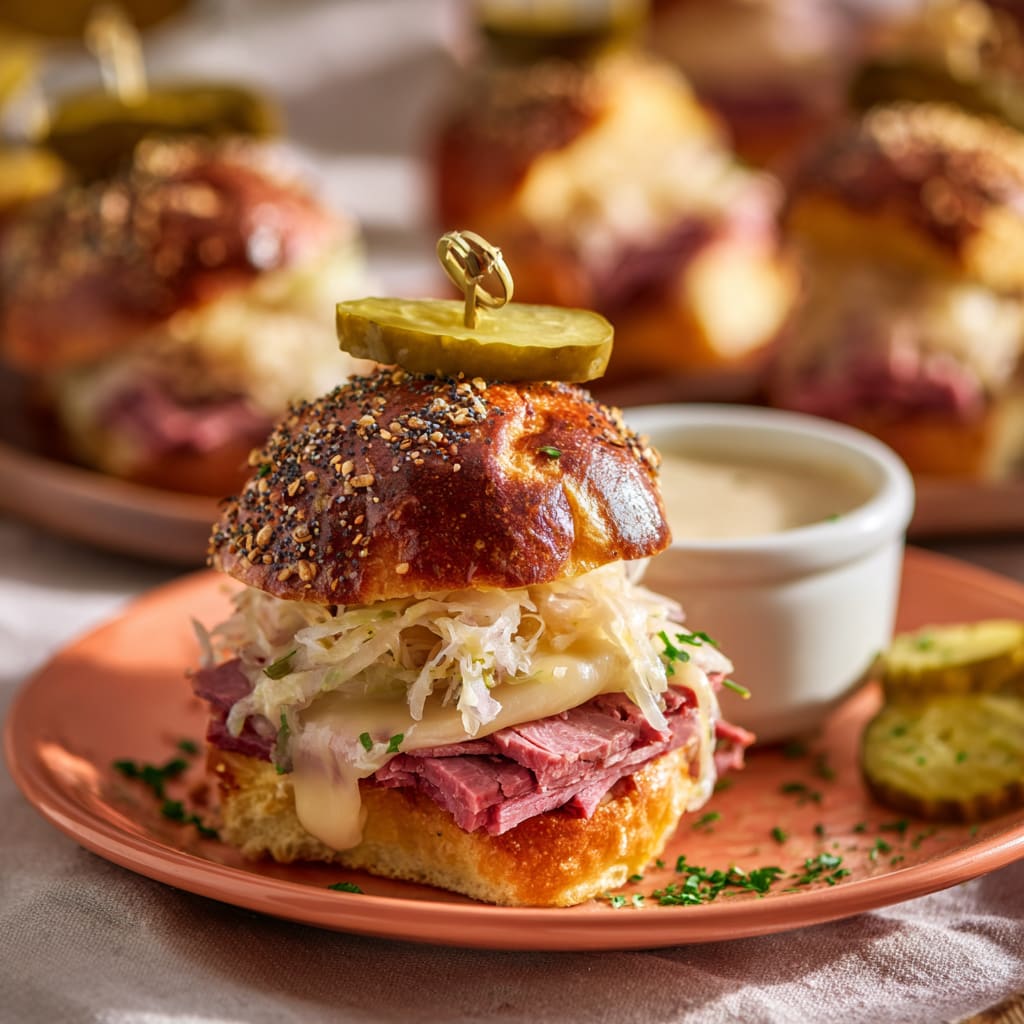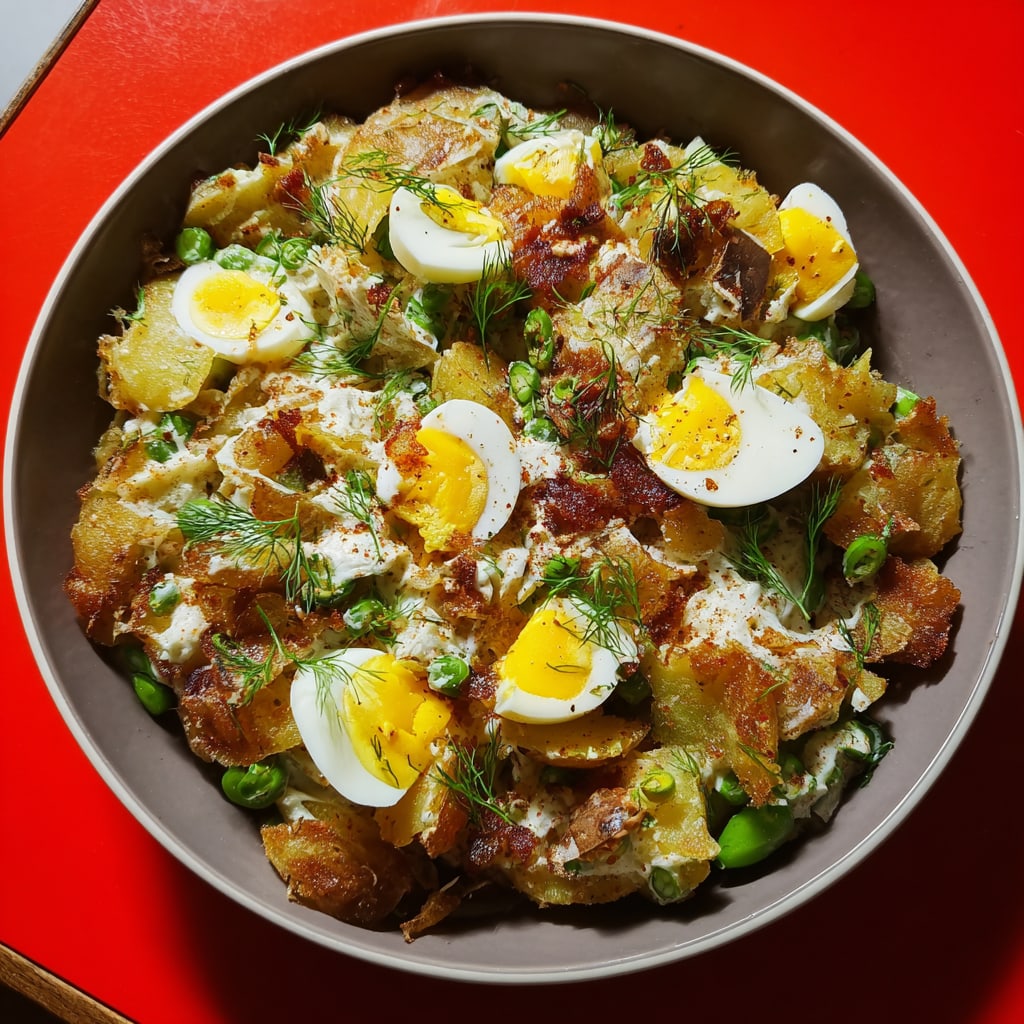Indulge in the decadent swirls of moist chocolate sponge cake embracing a luscious coconut-pecan filling in this show-stopping German Chocolate Cake Roll. This elegant dessert transforms the classic layered cake into a stunning spiral that slices beautifully to reveal its intricate pattern. The rich cocoa-infused cake paired with the traditional German chocolate frosting creates an irresistible combination that honors the beloved original while offering a fresh presentation. You’ll learn how to create a perfectly pliable chocolate cake, prepare an authentic coconut-pecan filling, and master the rolling technique for a dessert that’s both impressive and delicious.
Why You’ll Love This Recipe
The German Chocolate Cake Roll combines elegance and nostalgic flavor in one remarkable dessert. Unlike traditional German chocolate cake that requires multiple layers and frosting sides, this roll cake offers the same delicious taste with less effort and a more impressive presentation. The contrast between the light, springy chocolate sponge and the sweet, textured coconut-pecan filling creates an exciting sensory experience in every bite.
What makes this recipe truly special is the balance of textures – tender cake against chewy coconut and crunchy pecans. The roll format ensures the perfect ratio of cake to filling in each slice, something that’s harder to achieve with traditional layer cakes. Plus, the spiral design creates a stunning visual effect when served, making it perfect for special occasions.
Best of all, while it looks complicated, this recipe breaks down the process into manageable steps, allowing even novice bakers to create a professional-looking dessert that will have everyone reaching for seconds.
Ingredients
For the Chocolate Cake:
- 3/4 cup (95g) all-purpose flour, sifted
- 1/4 cup (30g) unsweetened cocoa powder – Dutch-processed offers a richer color and flavor
- 1 teaspoon baking powder
- 1/4 teaspoon salt
- 4 large eggs, room temperature
- 3/4 cup (150g) granulated sugar
- 1 teaspoon pure vanilla extract
- 1/4 cup (60ml) vegetable oil
For the Coconut-Pecan Filling:
- 3/4 cup (180ml) evaporated milk
- 3/4 cup (150g) granulated sugar
- 3 large egg yolks, lightly beaten
- 1/3 cup (75g) unsalted butter
- 1 teaspoon pure vanilla extract
- 1 1/3 cups (120g) sweetened shredded coconut – provides the classic chewy texture
- 1 cup (120g) chopped pecans, lightly toasted for enhanced flavor
- Powdered sugar for dusting
Pro Tips
Master the Perfect Cake Texture: The key to a successful cake roll lies in achieving the right texture – too dry and it will crack, too moist and it won’t hold its shape. Beat the eggs and sugar for a full 5 minutes until the mixture is pale yellow and forms ribbons when the beater is lifted. This creates the air structure necessary for a light, flexible cake that rolls beautifully without breaking.
The Rolling Technique: Roll your cake while it’s still warm! This is crucial and often overlooked. When you remove the cake from the oven, immediately invert it onto a powdered sugar-dusted towel and roll it up with the towel inside. This “trains” the cake to curve while it’s still pliable, preventing cracks when you fill and re-roll it later. Let it cool completely in this rolled position before unrolling to add the filling.
Perfecting the Filling Consistency: The traditional German chocolate filling requires careful attention. Cook it over medium-low heat, stirring constantly to prevent the egg yolks from scrambling. The mixture should coat the back of a spoon before you add the coconut and pecans. For the best texture, allow the filling to cool completely before spreading it on the cake – too warm and it will soak in, too cold and it won’t spread evenly.
Instructions
Step 1: Prepare the Baking Pan
Preheat your oven to 350°F (175°C). Line a 15×10-inch jelly roll pan with parchment paper, leaving an overhang on all sides. Spray the parchment with non-stick cooking spray. This preparation ensures your cake will release easily – a critical first step for a successful cake roll.
Step 2: Make the Chocolate Cake Batter
In a medium bowl, whisk together the flour, cocoa powder, baking powder, and salt. In a separate large bowl, beat the eggs with an electric mixer on high speed for about 2 minutes until frothy. Gradually add sugar and continue beating for 3 more minutes until the mixture is thick and pale. Beat in the vanilla extract and oil. Gently fold in the dry ingredients using a rubber spatula, mixing just until incorporated to maintain the air bubbles that will help your cake rise properly.
Step 3: Bake the Cake
Pour the batter into your prepared pan, spreading it evenly to the corners. Give the pan a gentle tap on the counter to remove any large air bubbles. Bake for 10-12 minutes until the top springs back when lightly touched. Don’t overbake – a slightly underbaked cake is better for rolling than an overdone one.
Step 4: Roll the Hot Cake
While the cake bakes, lay a clean kitchen towel on your counter and dust it generously with powdered sugar. When the cake comes out of the oven, immediately turn it onto the prepared towel, peel off the parchment paper, and dust the cake lightly with more powdered sugar. Starting at the short end, roll the cake and towel together. Place seam-side down on a wire rack and let cool completely, about 1 hour.
Step 5: Prepare the Coconut-Pecan Filling
In a medium saucepan, combine the evaporated milk, sugar, egg yolks, and butter. Cook over medium heat, stirring constantly, until the mixture thickens and becomes a light caramel color, about 10-12 minutes. Remove from heat and stir in the vanilla, coconut, and pecans. Allow the filling to cool completely before using, giving it time to thicken to a spreadable consistency.
Step 6: Fill and Re-roll the Cake
Once cooled, carefully unroll the cake and remove the towel. Spread the coconut-pecan filling evenly over the cake, leaving a 1/2-inch border around the edges. Gently re-roll the cake (without the towel), using the parchment paper to help you. Place seam-side down on a serving platter and chill for at least 1 hour to set.
Step 7: Serve Your Creation
Before serving, dust the top of your German Chocolate Cake Roll with powdered sugar for an elegant finish. Slice with a serrated knife using a gentle sawing motion to maintain the perfect swirl pattern in each piece.
Variations
Chocolate Glazed German Chocolate Roll: After chilling the assembled cake roll, drizzle the top with a simple chocolate ganache made from 4 ounces of melted semi-sweet chocolate mixed with 1/4 cup of heavy cream. This adds an extra layer of chocolate decadence and creates a stunning presentation with the ganache dripping down the sides.
Dairy-Free Adaptation: Transform this classic into a dairy-free treat by substituting coconut milk for evaporated milk, coconut oil for butter, and using dairy-free chocolate in the cake. The coconut milk actually enhances the traditional coconut flavor while maintaining the creamy texture of the filling.
Mocha German Chocolate Roll: Add 1 tablespoon of instant espresso powder to the cake batter for a sophisticated coffee undertone that beautifully complements the chocolate and coconut-pecan flavors. This variation offers a more complex flavor profile for coffee enthusiasts while maintaining the essence of the German Chocolate Cake Roll.
Storage and Serving
The German Chocolate Cake Roll can be stored in the refrigerator, covered with plastic wrap, for up to 3 days. The cake actually improves after the first day as the flavors meld together and the filling slightly softens the cake. For the best texture, remove it from the refrigerator about 30 minutes before serving to take the chill off.
For a special presentation, serve slices on dessert plates with a dollop of freshly whipped cream on the side and a light dusting of cocoa powder. Add visual interest by garnishing with a few toasted pecan halves and chocolate curls.
For an indulgent dessert experience, warm individual slices for 10-15 seconds in the microwave and serve with a scoop of vanilla ice cream, allowing it to melt slightly against the warm cake. The contrast of temperatures and the vanilla flavor complement the rich chocolate and coconut-pecan components beautifully.
FAQs
Why did my cake crack when I rolled it?
This usually happens when the cake is overbaked or cooled before rolling. Always roll your cake while it’s hot from the oven and avoid overbaking – the cake should spring back when touched but still feel slightly moist.
Can I make this German Chocolate Cake Roll ahead of time?
Absolutely! In fact, it benefits from being made a day ahead, allowing the flavors to meld. Just keep it refrigerated until about 30 minutes before serving.
Is German chocolate actually from Germany?
Despite its name, German Chocolate Cake is an American invention named after Samuel German, who created a type of dark baking chocolate for Baker’s Chocolate Company in the 1850s. The original cake recipe using this chocolate was published in 1957.
Can I freeze this cake roll?
Yes, you can freeze the German Chocolate Cake Roll for up to 2 months. Wrap it tightly in plastic wrap and then aluminum foil. Thaw overnight in the refrigerator before serving.
Why is my filling too runny?
The filling needs to reach the right temperature (about 170°F) to thicken properly. If it’s runny, you likely didn’t cook it long enough. Return it to the heat and continue cooking while stirring constantly until it coats the back of a spoon.
Conclusion
This German Chocolate Cake Roll is comfort food at its finest — a nostalgic flavor transformed into an elegant dessert that combines rich chocolate cake with the beloved coconut-pecan filling in perfect harmony. It’s the kind of dish that bridges the gap between everyday treats and special occasion desserts, impressive enough for celebrations yet simple enough to make when you crave those classic German chocolate cake flavors. Whether you’re a longtime fan of traditional German chocolate cake or trying these flavors for the first time, this roll cake version offers a delightful new way to experience a beloved classic.
Print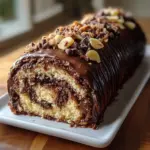
German Chocolate Cake Roll
Description
The ultimate chocolate lover’s dream! This German Chocolate Cake Roll transforms the classic dessert into a swirled masterpiece that looks fancy but is surprisingly doable. Your guests will never believe you made it yourself.
Ingredients
- 3/4 cup (95g) all-purpose flour, sifted
- 1/4 cup (30g) unsweetened cocoa powder
- 1 teaspoon baking powder
- 1/4 teaspoon salt
- 4 large eggs, room temperature
- 3/4 cup (150g) granulated sugar
- 1 teaspoon pure vanilla extract
- 1/4 cup (60ml) vegetable oil
- 3/4 cup (180ml) evaporated milk
- 3/4 cup (150g) granulated sugar
- 3 large egg yolks, lightly beaten
- 1/3 cup (75g) unsalted butter
- 1 teaspoon pure vanilla extract
- 1 1/3 cups (120g) sweetened shredded coconut
- 1 cup (120g) chopped pecans, lightly toasted
- Powdered sugar for dusting
Instructions
- Preheat oven to 350°F (175°C). Line a 15×10-inch jelly roll pan with parchment paper, leaving an overhang. Spray with non-stick cooking spray.
- In a medium bowl, whisk together flour, cocoa powder, baking powder, and salt.
- Beat eggs in a large bowl for 2 minutes until frothy. Gradually add sugar and beat for 3 more minutes until thick and pale. Beat in vanilla and oil.
- Gently fold dry ingredients into egg mixture until just combined.
- Pour batter into prepared pan, spreading evenly. Bake for 10-12 minutes until cake springs back when touched.
- While cake bakes, lay a clean kitchen towel on counter and dust with powdered sugar. Immediately turn hot cake onto towel, remove parchment, and dust with more sugar.
- Roll cake with towel from short end. Cool completely on wire rack, about 1 hour.
- For filling, combine evaporated milk, sugar, egg yolks, and butter in a saucepan. Cook over medium heat, stirring constantly, until thickened (10-12 minutes).
- Remove from heat, stir in vanilla, coconut, and pecans. Cool completely.
- Unroll cooled cake, remove towel. Spread filling evenly, leaving a 1/2-inch border.
- Re-roll cake without towel. Place seam-side down on serving platter and chill for at least 1 hour.
- Dust with powdered sugar before serving. Slice with a serrated knife.

